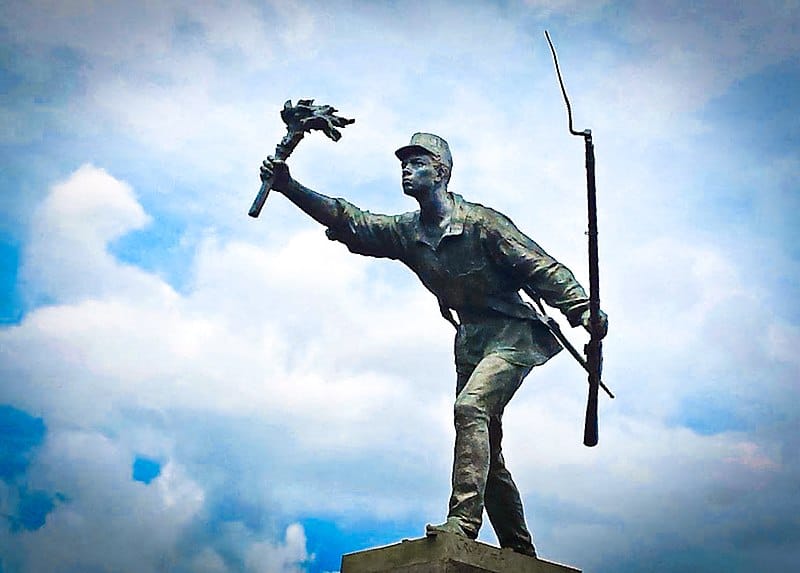Today is Juan Santamaría Day, the anniversary of the most famous battle in Costa Rican history, which took place in 1856, when a simple soldier with a torch saved the nation from being swallowed up by U.S. filibuster William Walker and his mercenary army.
Santamaría was born in Alajuela, northwest of the capital. The house where he grew up no longer stands, but a plaque on a corner lot across from the playing field of the Instituto de Alajuela high school shows where it stood. Though Santamaría died at the young age of 24, his single act of heroism has become part of the city’s and the nation’s heritage. The Battle of Rivas, fought in Rivas, Nicaragua, on April 11, is remembered with parades, civic programs and fireworks because it confirmed the country’s sovereignty.
The 1840s were a time of great change all over the world as countries experimented with independence and different forms of governing. In the United States, emotions were heating up over slavery in the South, and because of that, William Walker, medical doctor, southerner and ambitious soldier of fortune, wanted to annex the Central American countries as slave states.
But there was more to be gained. The San Juan River-Lake Nicaragua waterway was a major route for transporting passengers and goods from one ocean to another. It also provided business opportunities in shipping, hotels and services.
Walker easily won over Nicaragua and soon was made president there. In March 1856, he turned toward Costa Rica, stop two on his statehood campaign. President Juan Rafael Mora called for volunteers, and 3,000 recruits under General José María Cañas marched to the northwestern province of Guanacaste, where they routed Walker’s filibusteros and chased them north to Rivas.
There, Walker’s men fortified themselves in the Mesón de Guerra, a stout adobe building impenetrable to bullets.
But thatch roofs burn. When General Cañas called for someone to torch the building, legend has it that Santamaría volunteered, losing his life in the act. It marked the end of Walker’s attempts on Costa Rica, and later in the year the Tico army wrested control of the river route from his greedy fingers.
Walker made several more attempts on Central America and lost his life before a firing squad in Honduras in 1860.
It took 35 years for Costa Rica to recognize the magnitude of what Santamaría had done. In the 1890s, a wave of nationalism rolled over the globe and caught Costa Rica in its crest. Costa Rica needed a national hero! Someone remembered the soldier who died with a torch in his hand. Although no drawings or portraits of the hero existed, veterans of the campaign of ’56 described Santamaría as dark complected with “crispy” hair, for which he bore the nickname Erizo, or Hedgehog, an epitaph later given to the city of Alajuela.
Funds were raised and land selected in his native city, and the famous French sculptor Aristide Croizy was chosen to cast the memorial statue that still stands in Alajuela’s Juan Santamaría Park and is a focal point for many activities.
However, questions were raised and still crop up now and then about the statue. Although it shows a soldier with a torch and rifle and with crispy hair, he is wearing a uniform, and the Costa Rican army of 1856 went to war in campesino clothes and caites, or homemade leather sandals.
Because Croizy’s studio in France was popular at the time and the demand for cast bronze statues of heroes was worldwide (the Eiffel tower and the Statue of Liberty are both from this era), there was speculation that the Costa Rican statue was mixed up with one of a Haitian hero and that the real William Walker,in country clothes and caites was offloaded in Port-au-Prince. A statue of Santamaría at his namesake international airport in Alajuela shows him in more probable garb.






